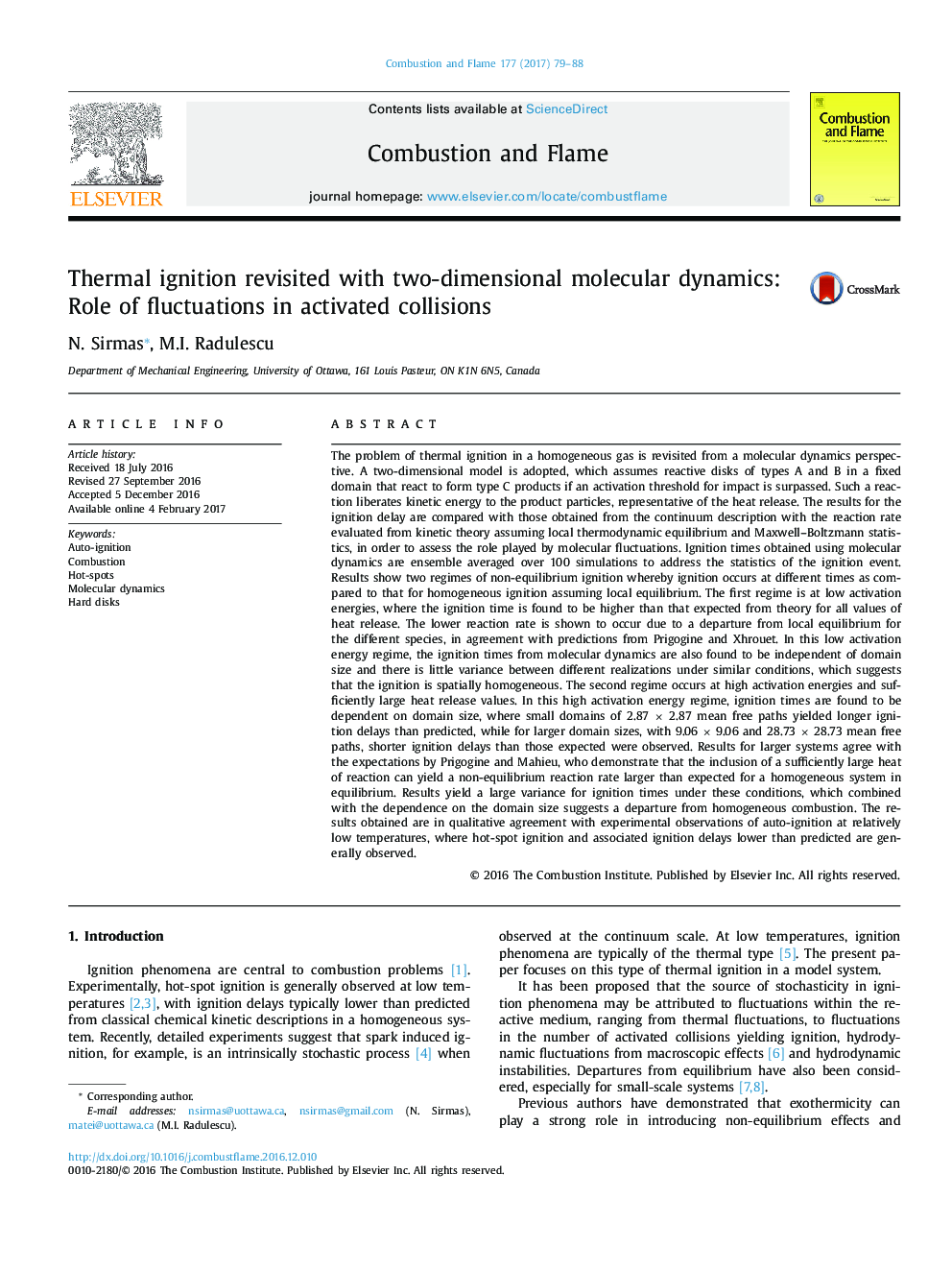| Article ID | Journal | Published Year | Pages | File Type |
|---|---|---|---|---|
| 6468534 | Combustion and Flame | 2017 | 10 Pages |
The problem of thermal ignition in a homogeneous gas is revisited from a molecular dynamics perspective. A two-dimensional model is adopted, which assumes reactive disks of types A and B in a fixed domain that react to form type C products if an activation threshold for impact is surpassed. Such a reaction liberates kinetic energy to the product particles, representative of the heat release. The results for the ignition delay are compared with those obtained from the continuum description with the reaction rate evaluated from kinetic theory assuming local thermodynamic equilibrium and Maxwell-Boltzmann statistics, in order to assess the role played by molecular fluctuations. Ignition times obtained using molecular dynamics are ensemble averaged over 100 simulations to address the statistics of the ignition event. Results show two regimes of non-equilibrium ignition whereby ignition occurs at different times as compared to that for homogeneous ignition assuming local equilibrium. The first regime is at low activation energies, where the ignition time is found to be higher than that expected from theory for all values of heat release. The lower reaction rate is shown to occur due to a departure from local equilibrium for the different species, in agreement with predictions from Prigogine and Xhrouet. In this low activation energy regime, the ignition times from molecular dynamics are also found to be independent of domain size and there is little variance between different realizations under similar conditions, which suggests that the ignition is spatially homogeneous. The second regime occurs at high activation energies and sufficiently large heat release values. In this high activation energy regime, ignition times are found to be dependent on domain size, where small domains of 2.87 Ã 2.87 mean free paths yielded longer ignition delays than predicted, while for larger domain sizes, with 9.06 Ã 9.06 and 28.73 Ã 28.73 mean free paths, shorter ignition delays than those expected were observed. Results for larger systems agree with the expectations by Prigogine and Mahieu, who demonstrate that the inclusion of a sufficiently large heat of reaction can yield a non-equilibrium reaction rate larger than expected for a homogeneous system in equilibrium. Results yield a large variance for ignition times under these conditions, which combined with the dependence on the domain size suggests a departure from homogeneous combustion. The results obtained are in qualitative agreement with experimental observations of auto-ignition at relatively low temperatures, where hot-spot ignition and associated ignition delays lower than predicted are generally observed.
